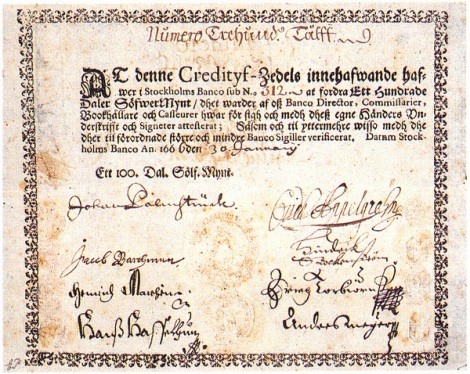For several thousand years money has gone through many tribulations before taking the shape that we know today. Géraldine Vessière explores, through 5 periods and 5 themes, this fascinating universe which saw the birth and the transformations of different means of transactions according to the period and the region. A series written by Géraldine Vessière and published in Le Soir the week of 12th-18th of August 2013
![]() Lydia and Ancient Greece: The appearance of the first coins
Lydia and Ancient Greece: The appearance of the first coins
If money dates back to the dawn of time, it was not until the 7th century BC and then the Greeks, that minted, metal coins first appeared. This innovation marked a turn in the history of money.
Sparta, an aversion to money
For the Spartans, possessing gold or silver was against the ethics of war. They saw it as a symbol of a ‘self’-seeking’ mentality which they despised.
Money, what is it used for?
Today payment by means of coins and notes are universally accepted. But in the majority of regions in the world, money isn’t, or wasn’t, reduced to trade and to the accumulation of individual profit.
 Conquests, corruption and inflation under Ancient Rome
Conquests, corruption and inflation under Ancient Rome
While Greece enthusiastically adopted the idea of a minted coinage since the 5th century, Rome, populated by farmers, was still using livestock, wheat and bronze ingots for trading. However, Rome’s rise in power was going to change the situation.
The Bank, an institution which dates back to the dawn of time
Paying in money, doing a transfer, borrowing… these processes are taken for granted today. However, it took millenniums to get to where we are today.
Gold diggers
If you want to go on a treasure hunt, beware. The law doesn’t allow you to do whatever you so wish.
 The Middle Ages: decline and revival of money
The Middle Ages: decline and revival of money
At the beginning of the Middle Ages, economic activity slowed down and coins became an exception. It wasn’t until the 11th century that the economy started to pick up, bringing developments that would continue into the modern times.
Magnificent Flanders
In the 14th century Flanders became a major place for economics and trade. The first stock market saw the light of day in Bruges.
Interest loans, prohibited but practised
The idea of financing the purchasing of a house or a car with the help of a loan is considerably widespread nowadays. However, it hasn’t always been like this. The subject has sparked numerous debates through the ages involving philosophers, theologists and economists.
 From the Renaissance to the industrial revolution: a monetary influx
From the Renaissance to the industrial revolution: a monetary influx
In the period between the Middle Ages and the modern era, the modern times have laid the foundations for the monetary transformations of the 20th century.
Bank notes, chaotic beginnings
How can a simple piece of paper value money? If in today’s world it’s common to have bank notes in your wallet, you may be wondering how we have gone from using gold and silver, two metals with an intrinsic value, to paying for our purchases with a document which only has value because it has been decreed.
Cash, dough, bready and honey – in the end it’s all money!
The words referring to money and the expressions we use when talking about money are multiplying. But where do they originate from?
 From the 19th until the 21st century- Money, an illusion?
From the 19th until the 21st century- Money, an illusion?
Money changed profoundly in the 19th century, but above all in the 20th century when it lost its intrinsic value and dematerialised.
Hello, the bank?
Payment technologies are continuously developing and the mobile phone is likely to play a leading role in this domain. Even if it’s only just getting going in Europe, in Africa, the technologies have been in development for a long time.
Trustee, metal, scriptural, what does it mean?
Coins, trustee, scriptural; sometimes you can get confused. Money is money! Why worry about it? a little insight to clarify things.





